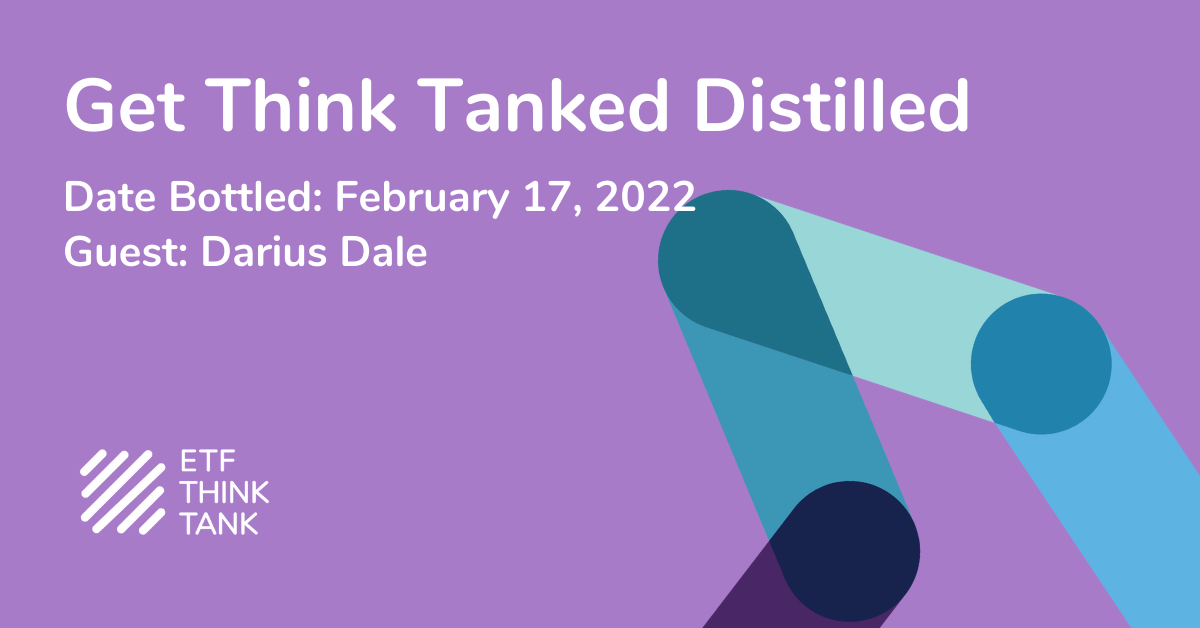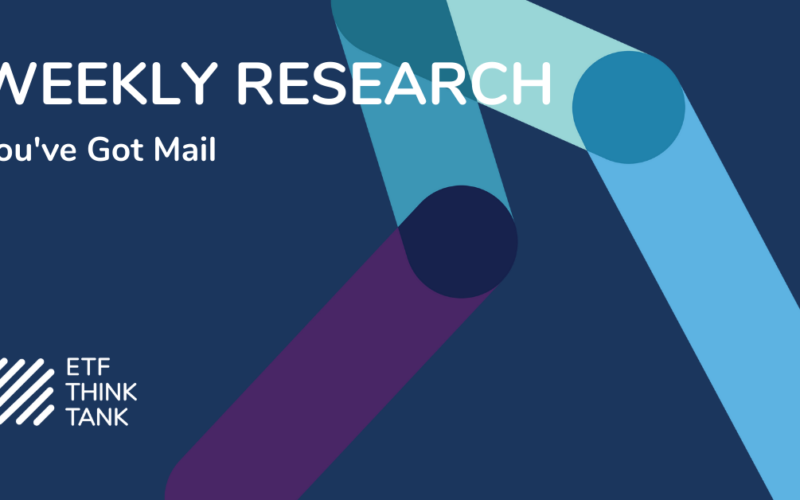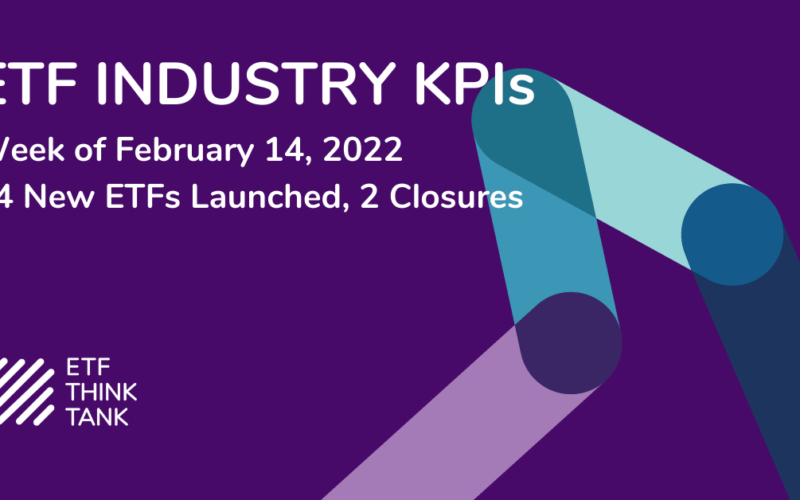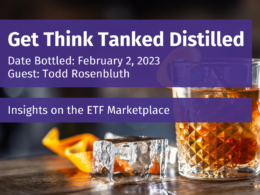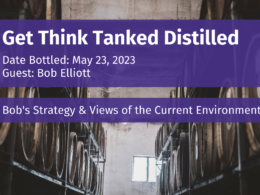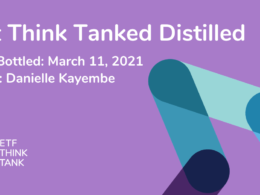Market conditions are starting to shift at a faster pace lately. Geopolitical tensions are starting to drive some of the narrative and the Fed is threatening to push tightening too far, too fast. Darius Dale, the founder and CEO of macro research firm 42Macro, joins the ETF Think Tank to discuss where he sees things heading and if investors should be worried.
Currently, Dale’s macro models are saying we’re in an inflationary environment, but it’s not necessarily a compelling signal. He says the current economy could flip very easily into a reflationary or deflationary regime pretty quickly depending on where things move from here. He feels it’s likely the current regime will be mitigated or interrupted by the post-omicron bounce. He can see this happening sometime in the spring, but the question is can it be sustained. He also notes that we’ve historically seen some pretty significant drawdowns in the financial markets following cycle peaks in jobs, earnings and growth. We don’t know when it might happen, but it’s easy to make the case that the setup for a similar situation is developing, especially considering the Fed.
Not surprisingly, the Russia/Ukraine situation comes up quickly. Dale says there are some difficulties in figuring out how a political conflict impacts his models because there’s so much noise and some potentially crazy signals. In general, he finds that the markets don’t price in black swan events, but they soon price in the result of the black swan and its impact on the economy. If a Russian invasion of Ukraine (or even a Chinese invasion of Taiwan) were to occur and result in war, the current low labor force participation rate could lead to a stagflationary environment. In China’s case, it would be a particularly high risk move for Xi since he’s trying to establish his legacy and doesn’t want to risk alienating trade partners.
Would the Fed change its current course of action in the event of a larger scale conflict, and could it decide to delay its monetary tightening plans? Dale says that the most important thing the Fed can do right now is reestablish its credibility. The broad consensus is that the Fed is way behind the curve in terms of handling inflation. The central bank has a job to do in managing rapidly rising prices and it will ultimately need to follow through on its mandate.
While many say that the Fed can’t possibly hike interest rates into an inverted yield curve, Dale disagrees. He notes that inflation rates are at their highest level in decades and the index for current financial conditions are at their lowest level in many years. If conditions are really that poor with inflation as high as it is, a recession might be inevitable regardless of what the Fed does. The question is which would be better for the Fed – a recession with the Fed losing its credibility or a recession with the Fed regaining its credibility on inflation? The median CPI just rose to the highest level it’s ever recorded. That’s all the Fed should need, and it can’t half-respond to conditions.
Other key takeaways:
- Dale says there’s a struggle right now between deteriorating fundamentals and positive liquidity dynamics. Shortly, we’re going to have deteriorating fundamentals and negative liquidity dynamics. He expects the impact of that could start manifesting in mid-2022.
- The markets judge things based on the rate of change. There have been many cases where you don’t need a recession in order for the asset markets to crash. You just need a sharp deceleration in growth. It looks like that could happen in the 2nd half of 2022.
- What could happen that would surprise the markets positively? Dale quickly points to a potential post-omicron bounce and notes that the faster-than-expected slowdown we saw during the initial wave could result in a mean reverting rebound. He also points to a short-term positive earnings dynamic ahead of us, but also says that when things start to decelerate and the trendlines start sloping down, that’s where the adverse event happens.
- Self-directed investors should not base their market outlooks as “I’m bullish” or “I’m bearish”. Instead, get away from the concept that a portfolio needs to be a singular bet. Dale’s work involves identifying regimes and assigning probabilities to those outcomes. There should be consideration given to probabilities, time frames and other factors. Some things work in some environments, others work in others. There’s no “right” way to skin the cat.
Disclosure
All investments involve risk, including possible loss of principal.
The material provided here is for informational purposes only and should not be considered an individualized recommendation or personalized investment advice. The investment strategies mentioned here may not be suitable for everyone. Each investor needs to review an investment strategy for his or her own particular situation before making any investment decision.
All expressions of opinion are subject to change without notice in reaction to shifting market conditions. Data contained herein from third party providers is obtained from what are considered reliable sources. However, its accuracy, completeness or reliability cannot be guaranteed.
Examples provided are for illustrative purposes only and not intended to be reflective of results you can expect to achieve.
The value of investments and the income from them can go down as well as up and investors may not get back the amounts originally invested, and can be affected by changes in interest rates, in exchange rates, general market conditions, political, social and economic developments and other variable factors. Investment involves risks including but not limited to, possible delays in payments and loss of income or capital. Neither Toroso nor any of its affiliates guarantees any rate of return or the return of capital invested. This commentary material is available for informational purposes only and nothing herein constitutes an offer to sell or a solicitation of an offer to buy any security and nothing herein should be construed as such. All investment strategies and investments involve risk of loss, including the possible loss of all amounts invested, and nothing herein should be construed as a guarantee of any specific outcome or profit. While we have gathered the information presented herein from sources that we believe to be reliable, we cannot guarantee the accuracy or completeness of the information presented and the information presented should not be relied upon as such. Any opinions expressed herein are our opinions and are current only as of the date of distribution, and are subject to change without notice. We disclaim any obligation to provide revised opinions in the event of changed circumstances.
The information in this material is confidential and proprietary and may not be used other than by the intended user. Neither Toroso or its affiliates or any of their officers or employees of Toroso accepts any liability whatsoever for any loss arising from any use of this material or its contents. This material may not be reproduced, distributed or published without prior written permission from Toroso. Distribution of this material may be restricted in certain jurisdictions. Any persons coming into possession of this material should seek advice for details of and observe such restrictions (if any).






